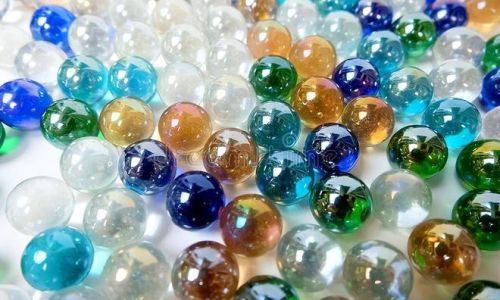Glass marbles, those small, spherical wonders that have captivated children and collectors alike for centuries, owe their timeless appeal to more than just their perfect roundness. The real magic lies within—the swirling vortices of color, the delicate lattices of light, and the ethereal blooms trapped forever in glass. These patterns, often resembling miniature galaxies or abstract paintings, are not mere accidents of nature but the result of meticulous craftsmanship and scientific precision. This article delves into the fascinating world of glass marble making, unraveling the secrets behind the creation of their mesmerizing internal designs.
A Brief History of Glass Marbles
The story of glass marbles dates back to ancient civilizations, where early artisans experimented with molten glass to craft decorative beads and ornaments. However, it was not until the 19th century that glass marbles as we know them today began to emerge. Industrialization played a pivotal role, with factories in Germany, Czech Republic, and later the United States perfecting mass-production techniques. Yet, even as machines took over, the allure of handmade marbles persisted, with artisans refining age-old methods to create one-of-a-kind pieces.
The Science of Glass: Materials and Composition
At the heart of every glass marble lies a carefully formulated blend of raw materials. The primary component is silica sand, composed of silicon dioxide (SiO₂), which forms the structural backbone of glass. To lower the melting point and improve workability, artisans add soda ash (sodium carbonate, Na₂CO₃) and limestone (calcium carbonate, CaCO₃). This mixture, known as soda-lime glass, is the industry standard for its durability and clarity.
But what gives marbles their vibrant hues and patterns? The answer lies in metal oxides and other chemical additives. For instance:

- Cobalt oxide (CoO) imparts a rich, deep blue.
- Iron oxide (Fe₂O₃) creates shades of green or amber, depending on oxidation.
- Manganese dioxide (MnO₂) introduces violet or black tones.
- Gold chloride (AuCl₃) produces brilliant reds when reduced in a flame.
These pigments are not merely mixed into the glass batch but strategically layered or applied during the forming process to create dimensional effects.
The Marble-Making Process: From Furnace to Finish
Melting and Gathering
The journey begins in a furnace heated to temperatures exceeding 2,000°F (1,093°C), where the raw materials melt into a molten liquid. A skilled artisan, using a hollow steel rod called a punty or blowpipe, gathers a small amount of molten glass from the furnace. The viscosity of the glass is critical—too thick, and it becomes unwieldy; too thin, and it loses shape.
Layering and Coloring
To create patterns, artisans employ techniques like caneworking or lampworking. In caneworking, thin rods of colored glass (canes) are fused together in a bundle, which is then stretched and twisted. When sliced crosswise, each slice reveals a intricate pattern. For marbles, these canes are often reduced to hair-thin threads (murrine) and arranged in concentric layers.
Alternatively, lampworking involves heating glass rods over a torch and manipulating them with tools to form delicate shapes. This method allows for freehand designs, such as flowers or geometric motifs, which are encased within clear glass.
Marbling Techniques
The signature swirl patterns of marbles are achieved through torchwork or spinning. In torchwork, the artisan heats a gather of glass and introduces colored fragments or powders. By rotating the punty rapidly, centrifugal force stretches the colors into spiral patterns. For more controlled designs, a marver—a flat, heat-resistant surface—is used to roll and shape the glass, blending colors smoothly.

Another technique, latticino, involves twisting two or more colors of glass together to create a twisted, rope-like pattern. This is often combined with aventurine—glass flecked with copper crystals—to add sparkle.
Shaping and Finishing
Once the desired pattern is achieved, the glass is shaped into a sphere. Traditional methods involve rolling the hot glass on a graphite or steel plate while maintaining rotation. Modern machines use molds or centrifugal force to ensure uniformity. After cooling slowly in an annealing oven to relieve internal stresses, the marble is polished to a glossy finish using abrasives or tumbling media.
The Role of the Artisan: Precision Meets Creativity
While machines streamline production, handmade marbles remain prized for their uniqueness. A master artisan must balance scientific knowledge with artistic intuition. Factors like flame temperature, glass viscosity, and timing are critical. For example, overheating can cause colors to bleed, while underheating results in uneven layers.
Artisans often draw inspiration from nature—ocean waves, galaxy nebulae, or autumn foliage—translating these into glass. A single marble may take hours to complete, with each layer added meticulously. The challenge lies in visualizing the final design within the molten medium, as mistakes are irreversible once the glass cools.
Innovations in Marble Design
Modern technology has expanded the possibilities of marble making. Digital kilns allow precise temperature control, enabling complex color gradients. 3D printing has been adapted to create custom molds for intricate shapes. Some studios even experiment with photoluminescent or dichroic glass, which change color under different lighting conditions.

Yet, traditional techniques persist. In Murano, Italy, artisans still practice sommerso (submerged) layering, where colored glass is encased in clear layers to create depth. In Japan, Edo Kiriko cutting is applied to marbles, etching delicate patterns onto the surface.
The Cultural Significance of Glass Marbles
Beyond their aesthetic appeal, glass marbles hold cultural significance. In some societies, they symbolize luck or prosperity. In others, they are used in traditional games or as tokens of friendship. Collectors worldwide prize rare marbles for their historical value and artistic merit, with some vintage pieces fetching thousands of dollars at auction.
Conclusion: The Alchemy of Art and Science
The creation of a glass marble is a testament to human ingenuity—a harmonious blend of chemistry, physics, and artistry. From the raw elements of earth to the fiery crucible of the furnace, each marble embodies a journey of transformation. The patterns within are not merely decorative but narratives frozen in time, telling stories of craftsmanship passed through generations.
As we marvel at the swirling cosmos within a marble, we are reminded that beauty often emerges from the intersection of precision and passion. Whether mass-produced or handcrafted, every glass marble is a microcosm of creativity, inviting us to ponder the infinite possibilities hidden within a sphere of glass.




0 comments